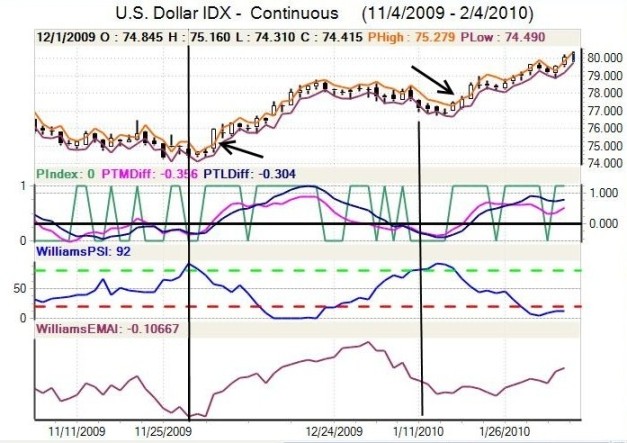Sentiment InterMarket Analysis
Post on: 5 Июнь, 2015 No Comment

Updated 06-16-2010 at 09:27 AM by Magic
Markets are forward-looking and “discount” or ‘factor in economic trends before they happen. This is true for all markets. Most traders are usually pretty bad at picking stocks because they are reactionary, not anticipatory. Since the markets is forward-looking, what is happening now was decided and acted on months ago. Also, markets do not operate as separate, self-contained, isolated mechanisms. They are inter-related so that a change in one is automatically reflected in another.
First, here are the main intermarket principles from John Murphy’s book Intermarket Analysis: Profiting from Global Market Relationships :
Basic intermarket principles
All markets are linked, domestically and globally
No market moves in isolation
Analysis of one market should include all the others
Market Groups
The four market groups are stocks, bonds, commodities, and currencies
Market Relationships
What relationships effect your market(s)? So: Intermarket analysis involves the simultaneous analysis of the four financial markets—currencies . commodities . bonds . and stocks . It is how these four markets interact with each other that gives them their predictive value.
Below is Murphy’s list of relationships as they existed before the 1987 crash. I show them here as a guide to creating your own:
• The U.S. dollar trends in the opposite direction of commodities
• A falling dollar is bullish for commodities; a rising dollar is bearish
• Commodities trend in the opposite direction of bond prices
• Therefore, commodities trend in the same direction as interest rates
• Rising commodities coincide with rising interest rates and falling bond prices
• Falling commodities coincide with falling interest rates and rising bond prices
• Bond prices normally trend in the same direction as stock prices
• Rising bond prices are normally good for stocks; falling bond prices are bad
• Therefore, falling interest rates are normally good for stocks; rising rates are bad
• A rising dollar is good for U.S. stocks and bonds; a falling dollar can be bad
• A falling dollar is bad for bonds and stocks when commodities are rising
• During a deflation (which is relatively rare), bond prices rise while stocks fall

There are four major security market categories: Equities, Bonds, Commodities, and the Currencies. From David Leal’s 4 part Guide to Intermarket Analysis (links below). Equities are useful as a thermometer of risk appetite. the bond market is a thermometer of risk aversion. Oil is useful as a proxy for growth expectations. The larger that the world economy becomes the more energy that it will need, so as the demand for energy increases the price of oil will rise. The price of oil is generally positively related to the risk based currencies, since they pay the most interest.
By studying the major movements and influences in various markets, we can better understand and prepare for what is happening and what might happen in the future. Cory Mitchell gives a great example of intermarket relationships in the economic cycle :
The Market Push and Pull
Let’s take a look at how commodities, bonds, stocks and currencies interact. As commodity prices rise, the cost of goods is pushed up. This increasing price action is inflationary, and interest rates also rise to reflect the inflation. Since the relationship between interest rates and bond prices is inverse, bond prices fall as interest rates rise.
Bond prices and stocks are generally correlated. When bond prices begin to fall, stocks will eventually follow suit and head down as well. As borrowing becomes more expensive and the cost of doing business rises due to inflation, it is reasonable to assume that companies (stocks) will not do as well. Once again, we will see a lag between bond prices falling and the resulting stock market decline.
The currency markets have an impact on all markets, but the main one to focus on is commodity prices. Commodity prices affect bonds and, subsequently, stocks. The U.S. dollar and commodity prices generally trend in opposite directions. As the dollar declines relative to other currencies, the reaction can be seen in commodity prices (which are based in U.S. dollars).
To trade effectively, I believe we must have conviction and conviction is based on knowledge. If we understand the forces that cause a move in a market, it will be much easier to find major changes in direction and be prepared to play them correctly. In essence, Intermarket Analysis is a vital step in the process of predicting, then seeing, money flowing out of one market and into another.
Next I will get into Sector Rotation. Then follow up on that with a long waltz through ETFs. ETFs seem a natural doorway to following the money flow through sector rotation. I will include an entry covering six economic scenarios from Ron Ianieri (the floor trader who trained floor traders) and how to play them with ETFs.














